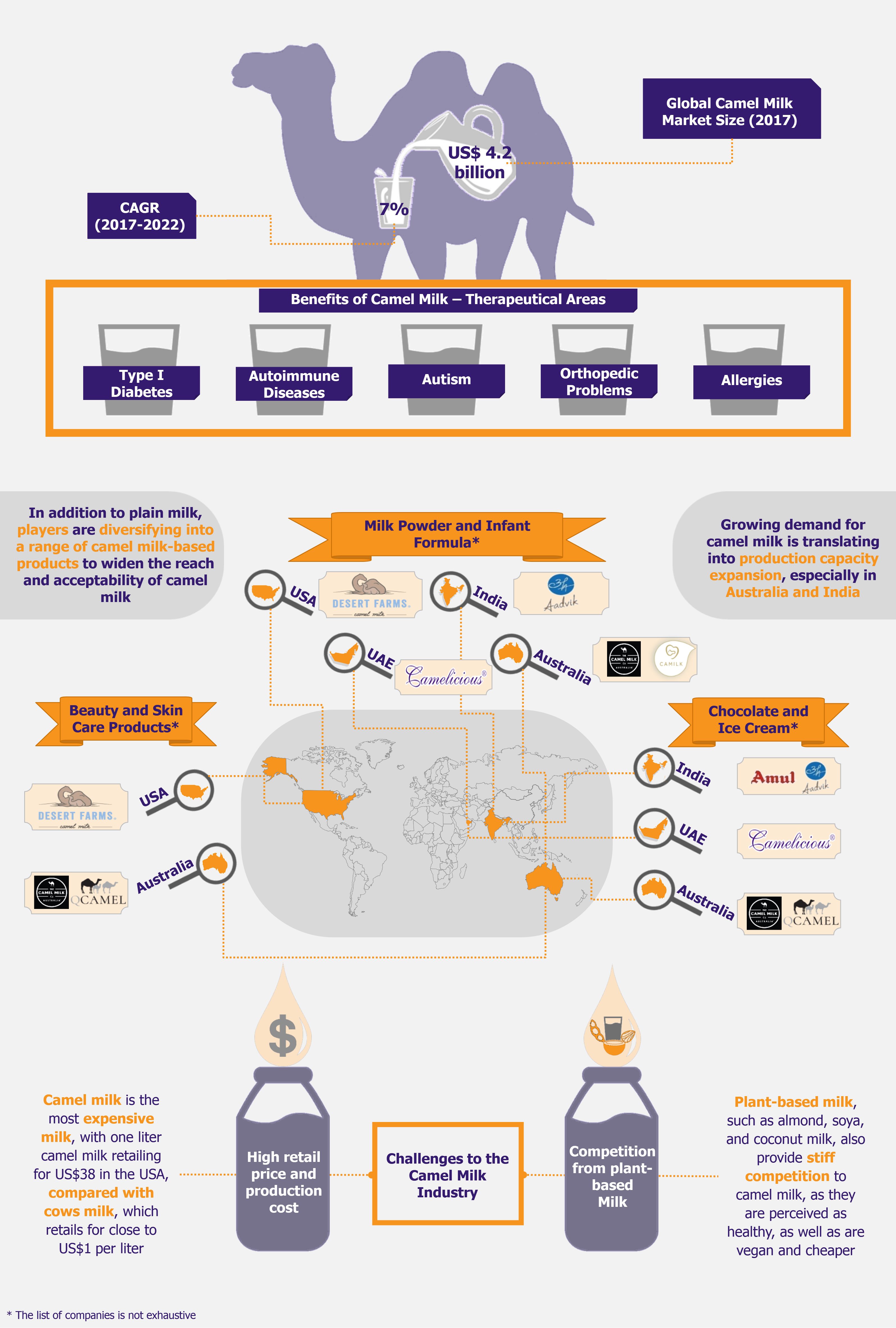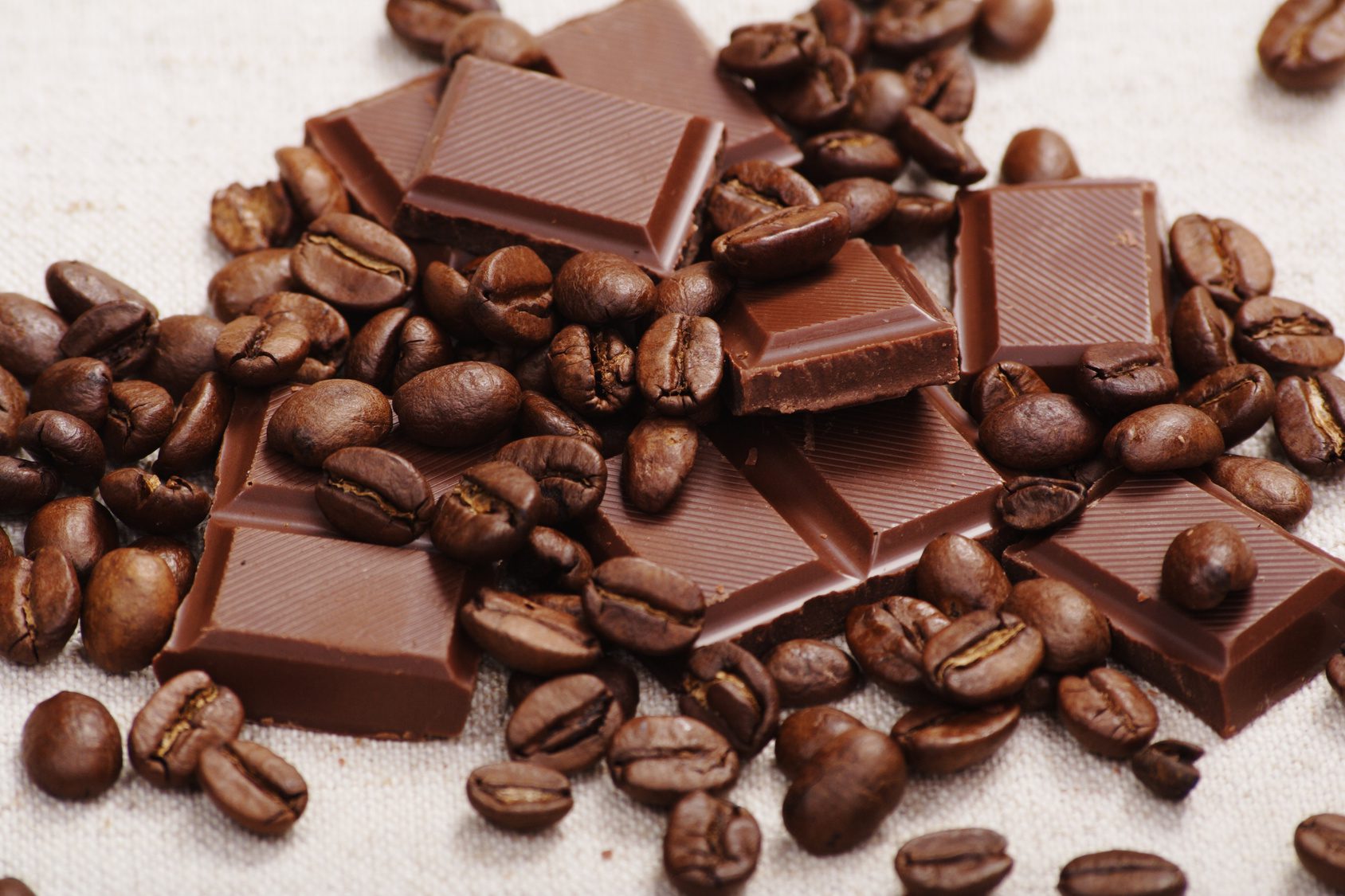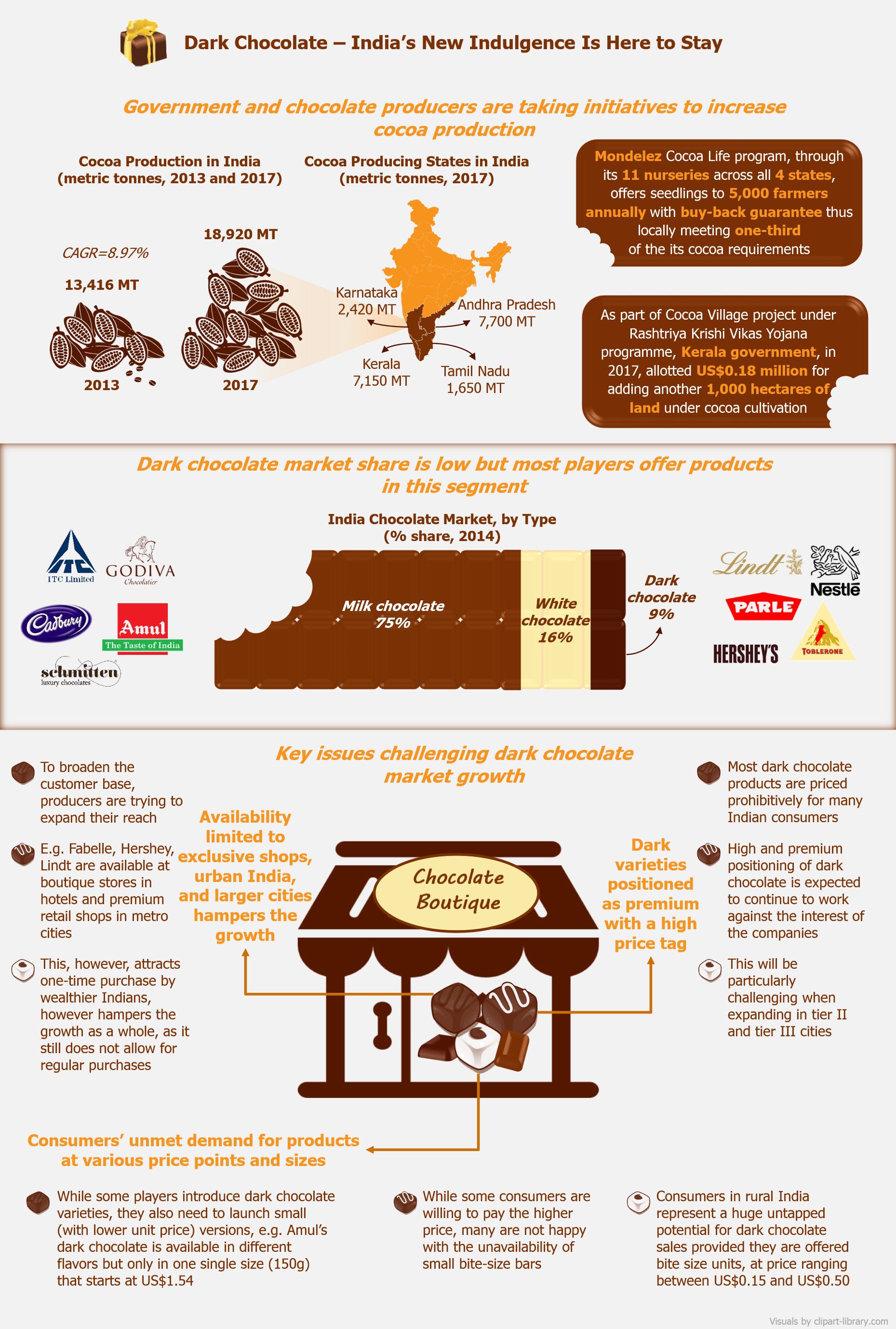Over the past few years, dairy-caused allergies and the growing debate regarding the inherent benefits and disadvantages of consumption of cow milk and its products have made consumers look for alternative sources to traditional dairy products. One product that has been growing in popularity owing to this is camel milk. Deemed to be the most expensive milk in the market, camel milk is known to have several medicinal values, especially for the treatment of diabetes, orthopedic problems, and autoimmune diseases. Few studies also claim that it is beneficial for the treatment of autism. While camel milk remains a niche product at the moment, it will be interesting to see if this product can make a dent in the massive dairy-milk industry, especially with the presence of several other healthy plant-based milk alternatives.
Growing demand and expanding production
Camel milk is not a new product as it has been consumed in the Middle East for ages, however, it is only recently that it has sparked global interest. Owing to its significant health benefits (primarily for diabetes), the product has found traction especially in developed countries, such as the USA, parts of Europe, Singapore, and Australia. The global market, which was valued at about US$4.24 billion in 2017 is estimated to register a CAGR of about 7% during 2018-2022.
Investments to expand Australian camel milk production
In response to the growing demand, several companies (especially across Australia) are entering the camel milk space and are increasing their investments in the sector.
Australia’s Wild Camel Corporation has expressed plans to increase its herd size five-fold from 450 camels to 2,500 camels over the next two years.
Similarly, Western Australia-based Good Earth dairy, which in mind-2018 had about 100 camels, plans to expand to 3,300 camels by June 2020, which would help the dairy produce about 10,000 liters of camel milk in a day.
Victoria-based The Camel Milk Co. doubled its milk output in 2017 to reach 250 liters a day from a herd of 250 camels. It has also maintained a scope for further expansion by moving to a farm that can house a herd of 1,000 camels, planning to increase its herd size along with growing demand.
International investments are also pouring into Australia’s camel milk market. In 2017, UAE-based investors funded a US$6 million (AUD8 million) pilot camel milk farm at Rochester, Australia. Several Chinese investors are also reported to be interested in investing in the camel milk business in the country.
India’s camel milk production grows as well
In addition to Australia, India (and a few African countries, such as Kenya and Ethiopia) has also focused on increasing camel milk production.
India-based Aadvik Foods and Products, which procures raw camel milk from Indian camel breeders and herders and processes and markets it, has significantly increased its scale of operations. It started with procuring and processing 80-100 liters milk per month in 2015 and moved on to procuring and processing close to 8,000 liters per month in 2017.
In January 2018, Rajasthan’s State Government (in partnership with Jaipur-based Saras Dairy) announced its plans to set up a mini camel milk plant in Jaipur. The plant will cost US$1 million (INR 70 million) and is expected to be set up by the end of the year. Post the establishment of the Jaipur plan, the government plans to open another mini plant in Bikaner.
Expanding food product lines
In addition to processing and marketing camel milk, several companies across the globe are expanding their product base to include camel milk products such as milk powder, chocolate, cheese, infant formula, ice cream, etc.
In 2016, Desert Farms, a US-based camel milk company, added camel milk soaps and camel milk powder to its product range.
In 2017, India-based Aadvik Foods, also extended its camel milk product line to include camel milk chocolates and milk powder.
In a similar move, Amul, one of India’s largest dairy cooperatives, launched camel milk chocolates in late 2017. Unlike most other players in the market, Amul has first started with chocolates and then wishes to enter the packaged camel milk market in the near future.
In 2018, Australia’s QCamel announced its plan to launch camel-milk chocolates for the Australian as well as international markets.
In February 2018, UAE-based Camelicious launched the world’s first camel milk infant formula for children aged one to three, an alternative for children who are lactose-intolerant.
The camel products for children are praised for their benefits, as camel milk is the closest alternative to mother’s milk in terms of nutritional value. Since camel milk is beneficial for children as it has higher iron and vitamin C content compared with other milk options, products such as chocolates, infant formula, and ice cream, seem to be smart product extensions, especially if such benefits are highlighted through marketing.
Moreover, product extensions help companies reach a greater audience for their camel milk. Since camel milk is saltier than the largely consumed cow milk, products such as chocolates, help garner users that otherwise may reject camel milk due to taste preferences.
High retail prices hamper demand growth
While camel milk as a product is gaining popularity and acceptance globally, it is not without its share of challenges. Camel milk is the most expensive type of milk in the market.
In the USA, Desert Farms sells one gallon of camel milk for US$144 (US$38 per liter), while it sells a kg of camel milk powder for about US$370. In comparison, a gallon of cow milk sells for about US$3.50 in the USA.
In Singapore, a liter of camel milk sells for about US$19 per liter (US$72 per gallon). In comparison, cow milk sells for close to US$8 per gallon in Singapore.
Similarly, camel milk in India costs about US$7 per liter and camel milk powder costs close to US$87 per kg, whereas cow milk retails for about US$0.6 per liter.
While the benefits of camel milk are plentiful, they do not always justify the high price in the eyes of the consumer. The high cost can be attributed to the high production cost and low yield compared with dairy cattle produce.
In Australia, the cost of producing one liter of camel milk is around US$13 (AUD17), while in India a liter of camel milk cost US$5-6 (INR 350-400) to produce – in comparison to this, producing one liter of cow milk costs farmers about US$0.27-0.32 (AUD0.37-0.44) per liter in Australia and US$0.2-0.27 (INR 14-22) per liter in India.
Camels also produce less milk in comparison with cows. While cows produce around 16 liters a day, a camel usually produces only 6 liters a day.
While the benefits of camel milk are plentiful, they do not always justify the high price in the eyes of the consumer.
In addition to the barrier of high price and costs, camel milk also faces significant competition from plant-based milk alternatives, such as soy, almond, and coconut milk. These milk options are also considered to be a healthy alternative to cow milk and have the added benefit of being vegan. Moreover, while these milk options are more expensive in comparison with cow milk, their prices are still considered more reasonable when compared with camel milk price.
EOS Perspective
Camel milk has a lot of inherent benefits, which are expected to ensure steady sales growth over the next decade. While there are no doubts regarding the growing popularity of camel milk, it is too far-fetched to say that this market can dent the dairy mega-industry. Camel milk market is standing at the beginning of its promising growth curve, however, it must work towards pushing the production costs down to become more mainstream rather than niche, which will not be achieved by simply marketing the medicinal properties of the product.
Camel milk market is standing at the beginning of its promising growth curve, however, it must work towards pushing the production costs down to become more mainstream.
Several dairy farms across the globe have realized this aspect and are working towards achieving economies of scale and getting costs down through increasing operations size and venturing into extended product lines. While it is certain that the industry will continue to grow, it is yet to be seen whether it can create a shelf space for itself across large retail stores or whether it remains a primarily niche premium online sales product mostly for affluent consumers.






